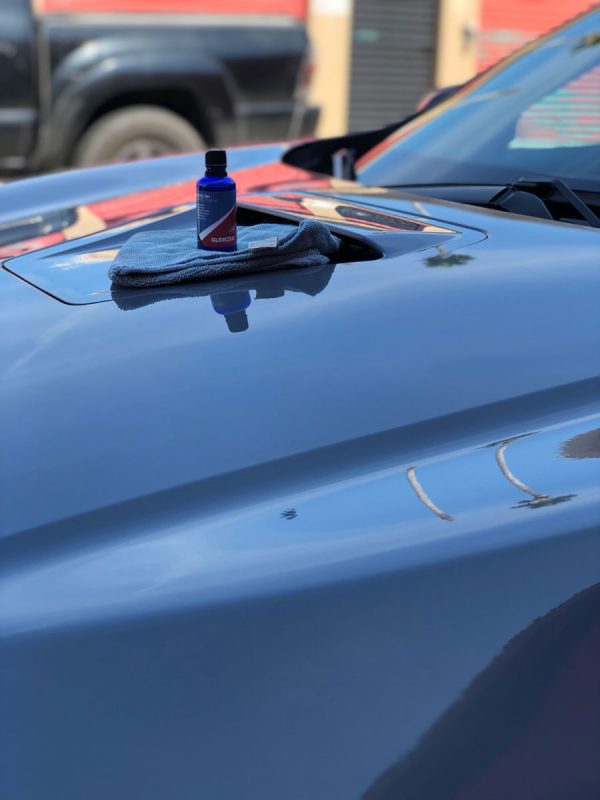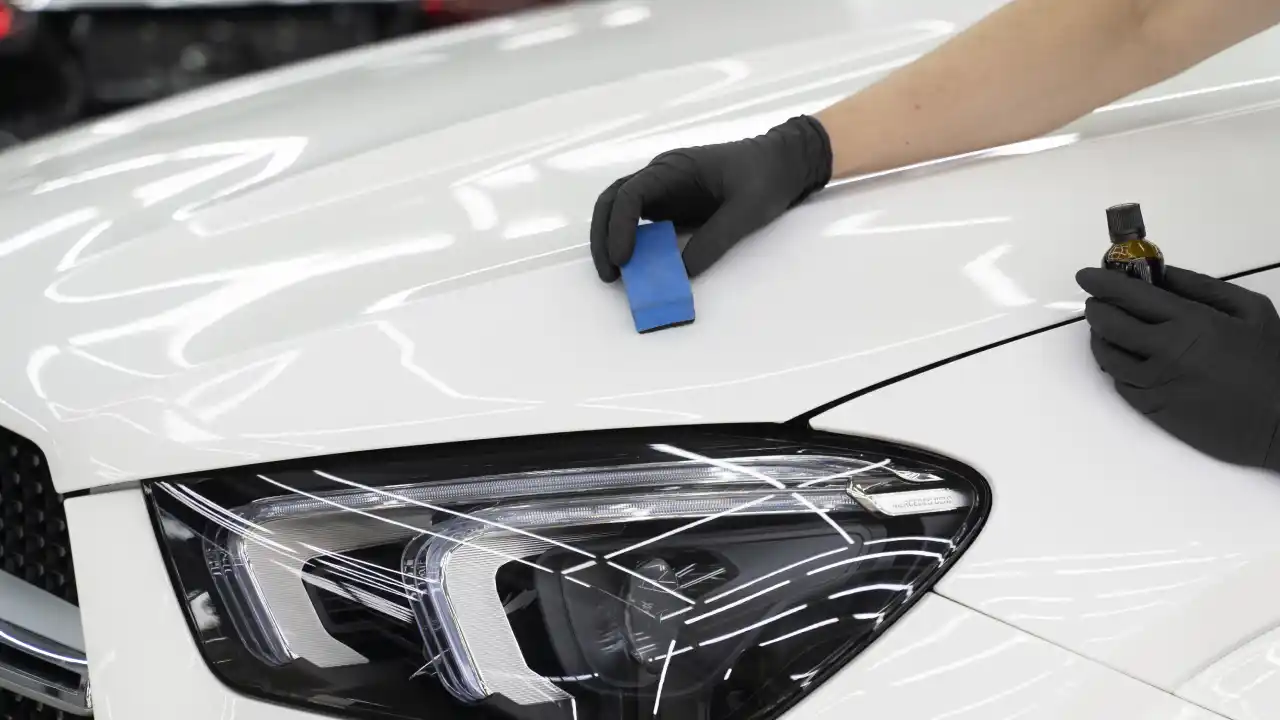The Role of Ceramic Coating in Enhancing Your Car's Resale Worth
The Role of Ceramic Coating in Enhancing Your Car's Resale Worth
Blog Article
The Importance of Ceramic Coating: Securing Your Automobile's Exterior With Precision
In an era where preserving the functional and aesthetic honesty of your car is paramount, ceramic layer arises as a crucial solution. With its unique bonding residential properties, ceramic finishing uses a degree of defense that far goes beyond conventional waxing approaches.
Advantages of Ceramic Coating
When it comes to protecting a car's aesthetic appeal, ceramic covering provides significant advantages. By creating a semi-permanent bond with the automobile's paint, ceramic finishings efficiently prevent oxidation and fading, making sure that the car keeps a glossy, showroom-like surface for a prolonged period.
In addition to its safety high qualities, ceramic finish supplies amazing hydrophobic properties, triggering water and other fluids to bead off effortlessly. This attribute streamlines the cleansing process, as dirt and debris are less likely to follow the surface area, lowering the frequency and effort required for maintenance. The covering's resistance to chemical stains from acidic impurities like bird droppings and tree sap is one more noteworthy advantage, decreasing potential paint damage.
Ceramic finishes also improve scrape resistance, providing a layer that can soak up minor abrasions and swirl marks. This characteristic is especially advantageous in keeping an immaculate surface, minimizing the possibility of noticeable blemishes and preserving the honesty of the vehicle's paintwork with time.

Exactly How Ceramic Layer Functions
Understanding the auto mechanics behind ceramic covering reveals its effectiveness as a safety solution for vehicles. Ceramic coverings are essentially liquid polymer applications that chemically bond with a vehicle's factory paint, creating a protective layer.
Application of ceramic covering includes a precise process. Initially, the automobile's surface area must be completely cleansed and sanitized to make certain optimal attachment. When used, the fluid polymer creates a semi-permanent bond with the paint, solidifying into a transparent, sturdy shield. This shield boosts the auto's gloss and hydrophobic residential properties, promoting much easier cleaning by causing water and impurities to grain and slide off easily.
Additionally, the coating's molecular structure provides resistance to small scratches and chemical stains. Unlike waxes or sealers that sit on top of the paint, ceramic coatings incorporate with the surface, offering resilient protection. This combination is fundamental to its efficiency, making sure the automobile's surface continues to be beautiful for many years.
Comparing Ceramic Coating to Alternatives
In the world of automobile protection, ceramic layer stands as a formidable choice when compared to traditional choices such as waxes and sealers. While waxes use a short-term lustrous surface, typically lasting just a couple of weeks to months, ceramic coatings give a longer-lasting option, commonly sustaining for several years. This sturdiness is credited to the chemical bonding that takes place when ceramic coatings are applied, forming a solid layer that is resistant to environmental risks.
Contrastingly, sealants, although even more durable than waxes, still disappoint the durable security offered by ceramic coverings. Sealers can generally last for up to a year, offering a synthetic guard versus specific elements. Nevertheless, they do not have the remarkable hydrophobic homes and UV defense that ceramic finishes deliver.
Additionally, ceramic finishes use boosted scratch resistance, which neither waxes nor sealers can properly match (ceramic coating). This is specifically helpful in maintaining a vehicle's immaculate appearance. Furthermore, ceramic coatings streamline maintenance efforts by lowering the adherence of dirt and crud, therefore helping with easier cleaning. In recap, while traditional waxes and sealers offer fundamental protection, ceramic layers offer a comprehensive, long-lasting solution that dramatically maintains the vehicle and improves's exterior finish.
Application Process Described
Applying ceramic coating to a vehicle needs a thorough procedure to ensure ideal results and durability. The preliminary step includes completely cleaning up the automobile's surface area to eliminate dust, grease, and previous waxes. This is vital for guaranteeing the finishing adheres properly. A pH-neutral hair shampoo and a clay bar therapy are commonly utilized to accomplish an excellent surface area. Once cleaned up, the vehicle is dried out and brightened to eliminate any type of imperfections, as any type of existing swirls or scrapes can become more obvious after the covering is used.
Adhering to surface area prep work, the application of the ceramic coating starts. The coating is usually applied in that site a climate-controlled atmosphere to avoid dirt bits from deciding on the freshly cleaned up surface. Using an applicator pad, the ceramic layer is applied in little areas to guarantee even protection. It is vital to follow the maker's guidelines relating to the ideal healing time and application density.
After application, the coating requires a specific treating duration, during which the vehicle should be protected from water and pollutants. This healing procedure can differ depending on the product yet typically varies from 24 to 2 days. Ultimately, this in-depth process is critical in accomplishing a shiny and durable coating.
Upkeep Tips for Durability
To preserve the longevity of a ceramic covering, adherence to a regimented maintenance regimen is essential. Routine cleaning is paramount; make use of a pH-neutral vehicle hair shampoo and soft microfiber mitts to prevent abrasions. Stay clear of automated automobile cleans, as their extreme brushes can jeopardize the finish's honesty. Instead, choose for a hand clean to guarantee comprehensive yet mild cleaning.
Post-wash, drying out the lorry with a tidy microfiber towel avoids water areas that might deteriorate the finishing in time. In addition, apply a ceramic covering booster every few months. These boosters reinforce the hydrophobic properties and enhance the coating's protective capabilities, guaranteeing it continues to be reliable against pollutants.
Bear in mind that parking areas play a crucial function in upkeep. ceramic coating. Whenever possible, park in shaded areas to reduce UV exposure, which can progressively deteriorate the covering. For lasting storage space, consider making use of a cars and truck cover for included defense against environmental aspects
Conclusion
In verdict, ceramic finish works as an essential safety layer for lorry outsides, offering lasting protection against ecological aspects such as uv, dirt, and crud rays. By creating a semi-permanent bond with the paint, it improves aesthetic appeal while protecting the cars and truck's value. Its hydrophobic homes assist in simpler maintenance, identifying it from alternate safety methods. Comprehending the application procedure and sticking to maintenance referrals are vital for making best use of the durability and efficiency of ceramic layer.
When it comes to protecting a vehicle's visual charm, ceramic finish provides substantial navigate to these guys benefits. By forming a semi-permanent bond with the lorry's paint, ceramic finishes effectively stop oxidation and fading, guaranteeing that the automobile maintains a shiny, showroom-like surface for a prolonged duration. Ceramic coverings are essentially fluid polymer applications that chemically bond with an automobile's factory paint, creating a safety layer. In summary, while standard waxes and sealers use fundamental defense, ceramic coverings offer a comprehensive, long-lasting remedy that dramatically enhances and maintains the vehicle's exterior coating.

Report this page